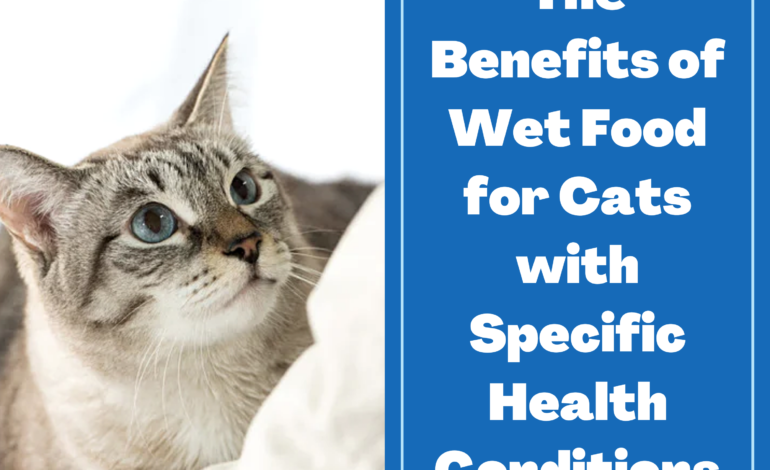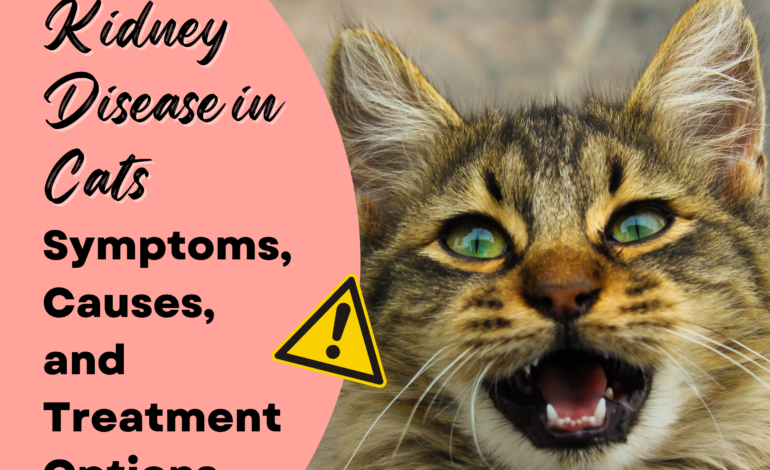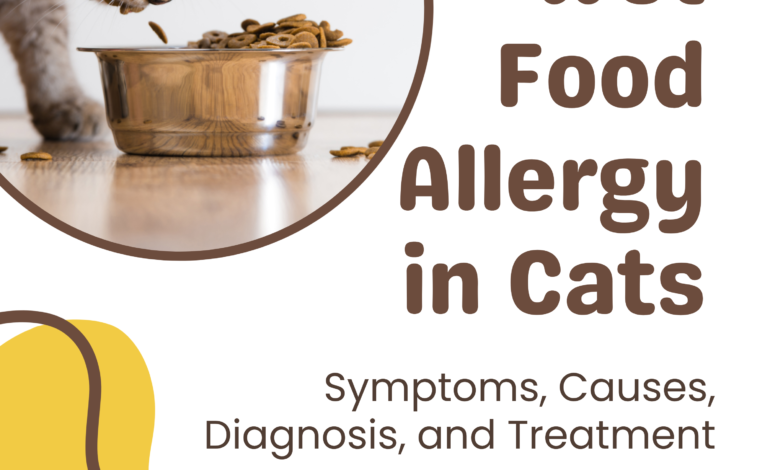The Benefits of Wet Food for Cats with Specific Health Conditions

Did you know that even slight nutritional imbalances can affect your cat’s health in big ways? For cats with health concerns, every meal counts. Wet cat food has surged in popularity because its high moisture content, tempting flavors, and easy digestibility help keep cats hydrated, satisfied, and healthy.
It’s especially helpful for cats with kidney disease, urinary issues, diabetes, dental problems, digestive concerns, and senior cats, making mealtime both nourishing and enjoyable.
In this guide, we’ll explore how wet food can support cats with specific health conditions, helping them stay hydrated, healthy, and happy.
Improved Hydration and Urinary Health

- High Moisture Content: Wet cat food has an average moisture content of 70–80%, whereas dry cat food has less than 6–12%. Not only does this help the cat drink more water, but it also takes some of the stress off a cat’s kidney by expelling toxins faster. Newer research indicates that cats eating primarily wet food — especially if it is made with limited amounts of grains and potatoes (carbohydrates) — have as much as a 30% lower risk of developing urinary crystals than kitties eating mostly dry food.
- Urinary Tract Benefits: Diluting your dog’s urine makes it less favorable for struvite and calcium oxalate crystals to form. Little known fact: cats that consume canned food have been shown to have more stable urinary pH readings throughout the day, which minimizes the likelihood of development of crystals.
- Kidney Support: It contains an adequate amount of moist (25%-29%) that helps prevent cat’s kidneys problems; Cats never feel too much thirst. Veterinary research states cats with CKD eating a moisture-rich diet significantly increase hydration parameters and preserve renal function over 12 months.
Tips:
- Combine wet food with fresh water to maximize hydration.
- Serve in small portions and refrigerate leftovers to maintain freshness.
- Consult your vet about renal support formulas if your cat shows early signs of kidney stress — these diets often contain controlled phosphorus and added kidney-friendly nutrients.
Wet food isn’t just tasty; it’s a strategic way to support hydration, urinary health, and kidney function, helping your cat stay healthier for longer.
Weight Management and Diabetes Support

- Low Carbohydrate, High Protein: Wet cat food is naturally higher in protein and lower in carbohydrates than most dry foods. This helps maintain stable blood sugar levels and reduces the risk of obesity, a major factor in feline diabetes. Research indicates cats fed predominantly wet diets have significantly lower post-meal glucose spikes compared to those on high-carb kibble.
- Feeling Full: The high moisture content increases stomach volume without adding extra calories, promoting satiety and helping prevent overeating. This can be particularly useful for cats prone to weight gain or insulin resistance.
- Recommended Choices: Formulas designed for weight management or diabetic support often include controlled carbohydrate content and added fiber to stabilize blood sugar.
- Consultation Advice: Always discuss any dietary changes with your veterinarian, as diabetic cats may require tailored feeding schedules or insulin adjustments when transitioning to wet food.
Dental and Appetite Support

- Soft Texture for Sensitive Mouths: Wet cat food’s soft texture makes it easier for cats with dental issues, missing teeth, or sensitive gums to chew and swallow. This is particularly beneficial for senior cats, as dental problems become more prevalent with age.
- Enticing Aroma to Stimulate Appetite: The palatable flavors and aroma of wet food encourage cats with poor appetite or dental discomfort to eat. Warming the food to room temperature can enhance its smell, making it more appealing to finicky eaters.
- Dual-Texture Options for Chewing Comfort: Some wet foods offer a dual-texture experience, combining smooth mousse with finely shredded meat. This variety can entice cats who need soft food but still have some ability to chew comfortably, making mealtime more enjoyable.
- Hydration Support for Overall Health: The high moisture content in wet food not only aids in digestion but also supports overall health by keeping cats hydrated. This is especially important for senior cats, who may have a reduced thirst drive.
Digestive Health and Sensitive Stomachs

- Gentle on the Gut: Wet cat food’s high moisture and soft texture make it easier to digest, allowing for better nutrient absorption and reducing stress on the gastrointestinal tract. This is particularly helpful for cats with sensitive stomachs or recovering from digestive upset.
- Constipation Prevention: Added moisture naturally softens stools and promotes regular bowel movements. Unlike dry kibble, which can contribute to harder stools, wet food helps maintain smooth digestion.
- Hairball Control: Wet food can include fiber blends that aid in moving hair through the digestive tract, reducing the frequency and severity of hairballs. A lesser-known tip: pairing wet food with occasional pumpkin or psyllium supplements can further support digestive health.
- Digestive Variety: Some wet foods use novel proteins (like rabbit or venison) that are less likely to trigger food sensitivities, making them suitable for cats prone to gastrointestinal reactions.
Wet food isn’t just tasty — it’s a digestive ally, supporting nutrient uptake, smooth bowel function, and overall gut comfort.
Wet food vs. Dry food for digestive benefits
| Feature | Wet Cat Food | Dry Cat Food | Insight/Benefit |
| Moisture Content | 70–80% | 6–12% | Higher moisture softens stools, aids digestion, reduces constipation risk. |
| Digestibility | Soft, easy-to-chew | Hard kibble | Soft texture supports nutrient absorption and is gentler on sensitive stomachs. |
| Hairball Control | Can include fiber blends | Limited fiber | Helps move hair through the gut, minimizing hairball formation. |
| Protein Source | Often novel or single-source proteins | Commonly mixed | Reduces risk of food sensitivities, supports cats with GI issues. |
| Gut Comfort | Gentle on the GI tract | Can contribute to harder stools | Less gastrointestinal stress and better tolerance for sensitive cats. |
| Supplementation | Can pair with pumpkin/psyllium | Limited options | Further supports smooth digestion and regular bowel movements. |
Choosing the Right Wet Food for Cats with Health Conditions

- Work Closely with Your Vet: Every cat is unique — their age, medical history, and even personality can influence dietary needs. For example, a senior cat with early kidney stress may benefit from a diet lower in phosphorus, while a diabetic cat may need lower carbohydrates and more protein.
- Read Beyond the Labels: Look for “complete and balanced” certification, but also check ingredient quality. Single-source proteins, limited fillers, and minimal artificial additives help reduce the risk of digestive upset and food sensitivities.
- Texture and Palatability Matter: Cats can be picky eaters, especially if they’re dealing with dental issues or recovering from illness. Offering pâté, shredded, or chunks in gravy can make a big difference in whether your cat eats consistently — and a happy eater is a healthy eater.
- Specialty Diets When Needed: Renal, urinary, diabetic, or hypoallergenic wet foods aren’t just marketing labels. They’re formulated to manage specific conditions while still providing hydration, essential nutrients, and flavors cats enjoy. Your vet can help determine when to introduce these diets.
- Practical Tip Often Overlooked: Some cats benefit from mixing small amounts of new wet food with their current diet to gradually acclimate their taste buds and digestive system — this can reduce food aversion or gastrointestinal upset.
Conclusion
When it comes to your cat’s health, what’s in their bowl matters as much as love in your lap. Wet cat food isn’t just delicious — it’s a powerhouse for hydration, kidney and urinary support, blood sugar management, and digestive comfort.
For seniors or picky eaters, it helps ensure every bite counts, keeping them nourished and thriving. The key is selecting the right formula for your cat’s unique needs and consulting your veterinarian for guidance.
Give your cat the nutrition they deserve — explore vet-approved wet food options today at Meow Care Hub!
FAQs
Q1: What are the main benefits of wet cat food for health issues?
A: Wet cat food provides high moisture for hydration, supports kidney and urinary health, aids digestion, helps with weight management and diabetes, and is easier to chew for senior cats or those with dental problems.
Q2: Which wet food is best for cats with kidney disease?
A: Specialized renal support wet foods are ideal, offering reduced phosphorus, sodium, and protein levels while maintaining high moisture content to support kidney function. Always consult your veterinarian for tailored recommendations.
Q3: Can wet food help cats with diabetes or obesity?
A: Yes! Wet food is lower in carbohydrates and calories than dry food, promoting satiety, supporting weight management, and helping regulate blood sugar levels.
Q4: Is wet food suitable for senior cats or cats with dental issues?
A: Absolutely. The soft texture is easier to chew, and the palatable flavors encourage appetite in older cats or those with dental discomfort.
Q5: How should I choose the right wet food for a cat with health concerns?
A: Consult your veterinarian, check for “complete and balanced” labels, prioritize high-quality protein, avoid fillers, and select textures your cat prefers. Specialized formulas for kidney, urinary, diabetic, or sensitive cats can also be considered.
Q6: Can wet food aid digestive problems and hairball control?
A: Yes. Wet food’s high moisture and soft texture ease digestion, support nutrient absorption, and added fiber can help reduce hairballs and constipation.





